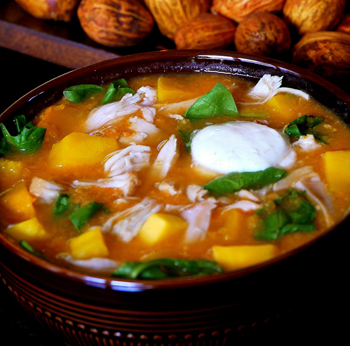 You usually see this around Thanksgiving – it makes a great first course – but it’s also perfect on a cold winter day. I think the most impressed I’ve ever been with this soup was the first time I had it at Spago’s in Beverly Hills. Wolfgang Puck serves his signature soup with a cranberry relish and cardamom infused cream.
You usually see this around Thanksgiving – it makes a great first course – but it’s also perfect on a cold winter day. I think the most impressed I’ve ever been with this soup was the first time I had it at Spago’s in Beverly Hills. Wolfgang Puck serves his signature soup with a cranberry relish and cardamom infused cream.
I love the taste of cardamom – though a little goes a long way – it definitely adds a new dimension to both sweet and savory dishes. When I make this at home, I skip the relish and cream, but I do garnish the soup with sugar-spiced croutons – a worthy substitution!
Spago’s recipe also uses baked squash that is then pureed, but I opted for the method in Cook’s Illustrated which uses the seeds and fibers to build flavor, then steams the squash in a flavorful liquid.

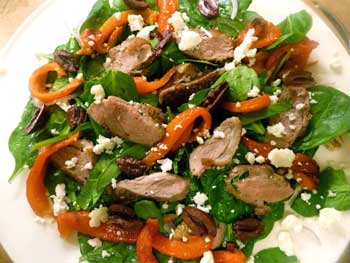 If you don’t think salad is a hearty enough meal for the dead of winter, this one will certainly change your mind… With a warm duck breast sliced atop a flavor packed mix of greens, vegetables, nuts and cheese, it’s a dish that’s rich and satisfying but also pretty skinny.
If you don’t think salad is a hearty enough meal for the dead of winter, this one will certainly change your mind… With a warm duck breast sliced atop a flavor packed mix of greens, vegetables, nuts and cheese, it’s a dish that’s rich and satisfying but also pretty skinny.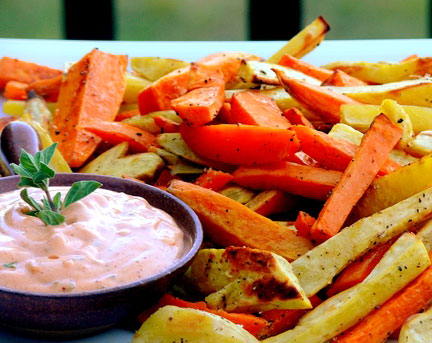 I came home from the market the other day and I had bags of acorn squash, butternut squash, parsnips and obviously the sweet potatoes and yams you see here.
I came home from the market the other day and I had bags of acorn squash, butternut squash, parsnips and obviously the sweet potatoes and yams you see here.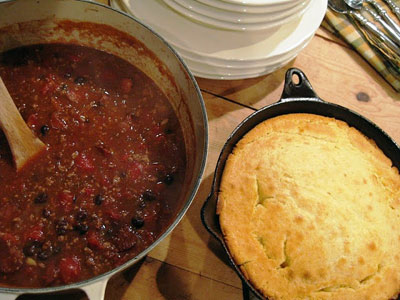 I love soups and stews. I truly do. This soup is a derivative of fresh, previously fresh, and local flavors that all meld together in a literal melting pot of culinary delight.
I love soups and stews. I truly do. This soup is a derivative of fresh, previously fresh, and local flavors that all meld together in a literal melting pot of culinary delight.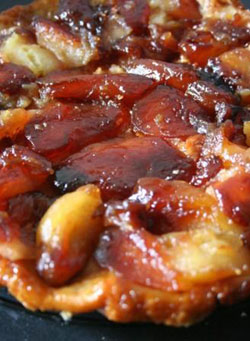 Sounds funny, right? “Winter fruit”. It’s a sorry state of affairs, especially in California where we can get so many splendid things almost all year round AND believe it or not, we DO have winter.
Sounds funny, right? “Winter fruit”. It’s a sorry state of affairs, especially in California where we can get so many splendid things almost all year round AND believe it or not, we DO have winter.
